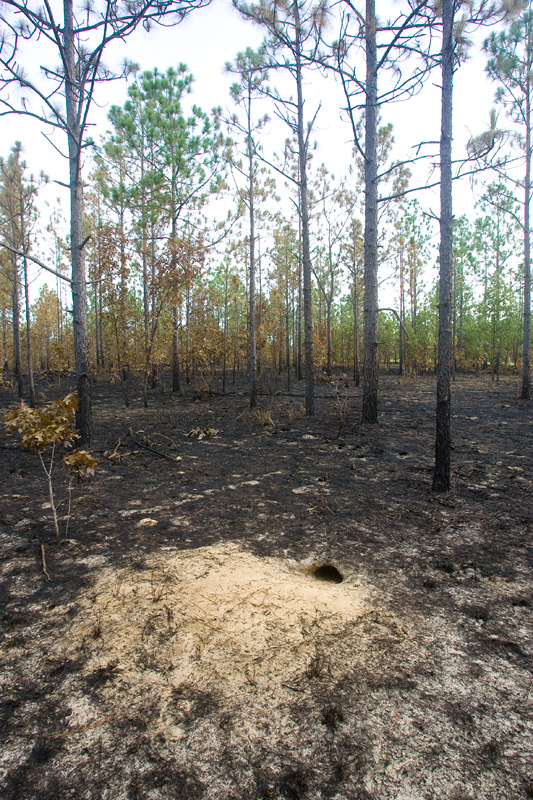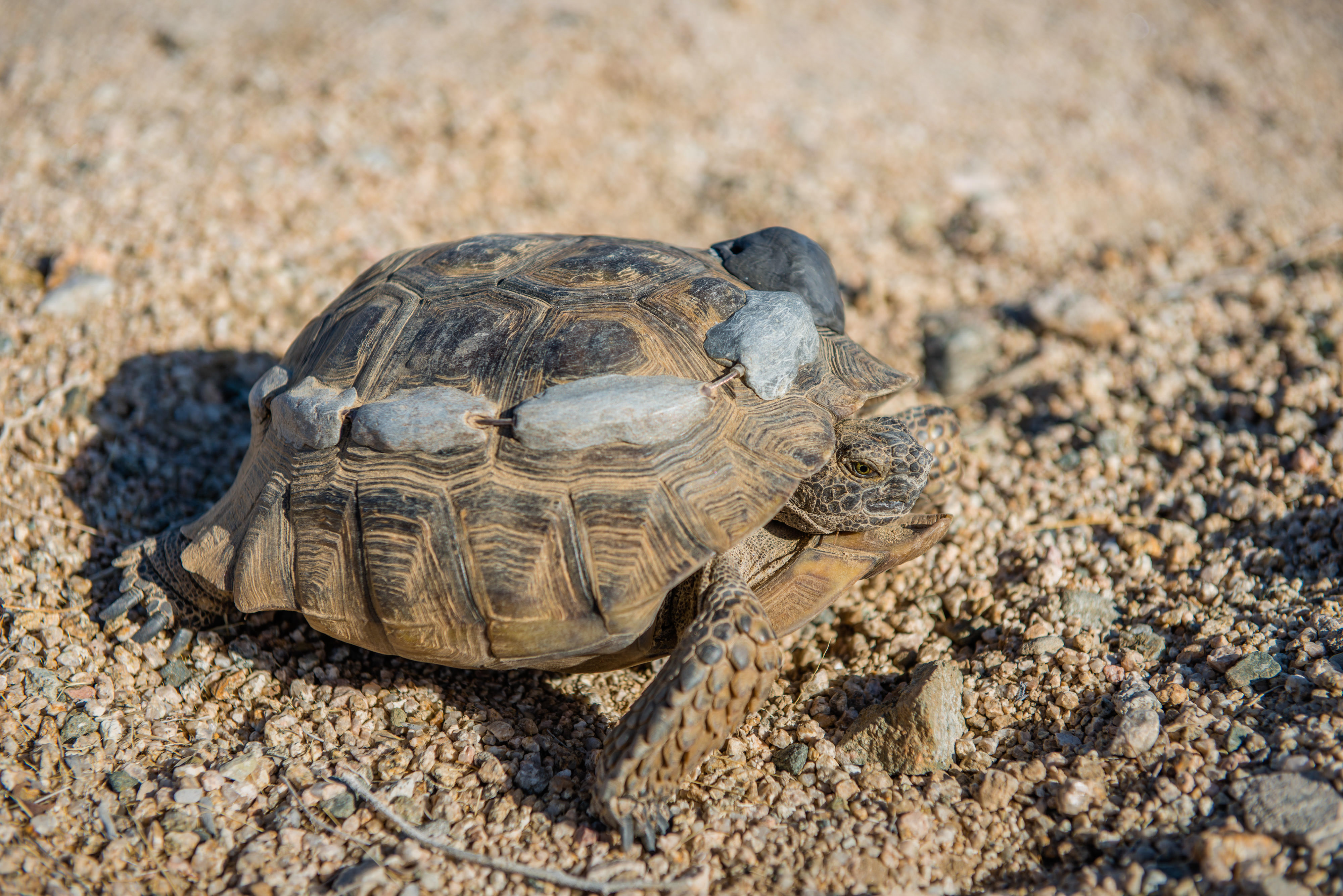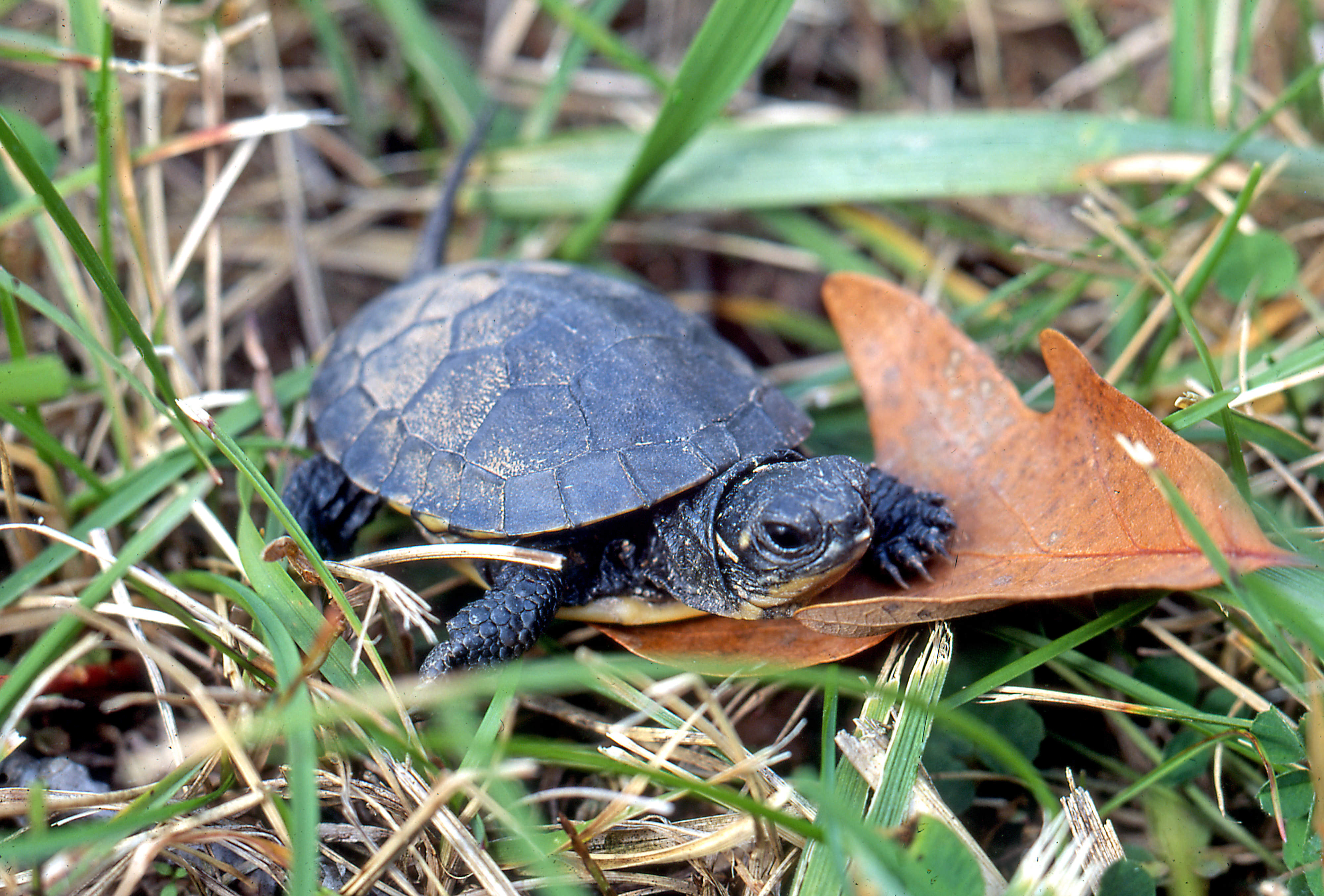Gopher Tortoise
As one of the oldest living species on the planet, gopher tortoises are now threatened. We're protecting their habitat and giving them a head start.

Facts About Gopher Tortoises
- Scientific name: Gopherus polyphemus
- Conservation status: Threatened to Endangered
- Size: 9 to 11 inches as adults (23-28 cm), 10 pounds (4.5 kg)
- Lifespan: 40-60 years in the wild, 90 in captivity
- Shell color: Tan, brown, or gray
What is a gopher tortoise?
The gopher tortoise is about as charming as a tortoise can get. Originating 60 million years ago, it’s one of the oldest living species on the planet and the only native North American tortoise species east of the Mississippi River. The gopher tortoise range is from southern South Carolina through the southern half of Georgia, into Florida, and west into southern Alabama, Mississippi and Louisiana. However, it’s nearly extinct in South Carolina and Louisiana and rare in Mississippi and Alabama.
The gopher tortoise is relatively small: about 9-11 inches long (23-28 cm) and 10 pounds (4.5 kg) fully grown. But, once they reach adulthood, gopher tortoises can live to be over 90 years old!
Nesting season is from late April to mid-July, with clutches of 5-9 eggs. Hatchlings emerge from the nest from late August through early November and face immediate threats. Sadly, only 25% of all eggs hatch in the wild and only 10% of hatchlings survive their first year. On top of that, sexual maturity doesn’t happen for at least a decade, making gopher tortoises very slow to reproduce and very vulnerable.
Gopher tortoise burrows: the key to an ecosystem
Gopher tortoises are a keystone species, meaning they have an outsized impact on their environment. This impact is largely due to their burrows. Gopher tortoises have large, elephantine hind limbs and flattened, shovel-like forelimbs that are uniquely designed to dig burrows up to 40 feet long and 10 feet wide. At least 300 other species also use their burrows, including rare species such as the Eastern indigo snake, gopher frog, Florida mouse, and hundreds of rodents and invertebrates.
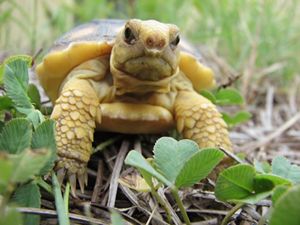
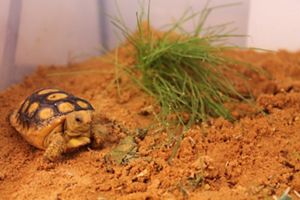
Burrows are the ideal location for hibernating during winter and escaping the summer heat. In fact, gopher tortoises spend as much as 80% of their time in burrows. Gopher tortoises and other animals use the burrows to shelter from the elements, including fire, and from predators. Many species would not survive without gopher tortoises.
Gopher Tortoise Habitat and Threats
Protecting gopher tortoises and their habitat provides a range of benefits for both people and nature. By protecting habitat for gopher tortoises, we also protect habitat for hundreds of other species, including iconic, rare or endangered species such as the Eastern indigo snake, striped newts and gopher frogs. Protected gopher tortoise habitat also benefits people by providing space for recreation and restoring large tracts of forest helps improve water quality.
Fire fun fact
Gopher tortoises—and many other species—use their burrows to shelter from seasonal and prescribed fires that are a natural part of the longleaf pine and other ecosystems they live in.
The main threat to gopher tortoises is the same one faced by hundreds of other species around the world: habitat loss. One of their favorite habitats, longleaf pine forest, once covered 90 million acres unbroken from Virginia to Florida to Texas. Less than 5% of original longleaf pine forest remains today.
The longleaf pine ecosystem includes old-growth forest, open pine stands, well-drained sandy soils, plenty of low grasses and vegetation to eat and room to move around. Unfortunately for the gopher tortoise, this habitat is also very desirable for people, especially in Florida. Development, urban sprawl, agricultural conversion and fire suppression drastically reduced and fragmented gopher tortoise habitat and made intact forests overgrown and unsuitable for tortoises.
Quote: Steve Friedman
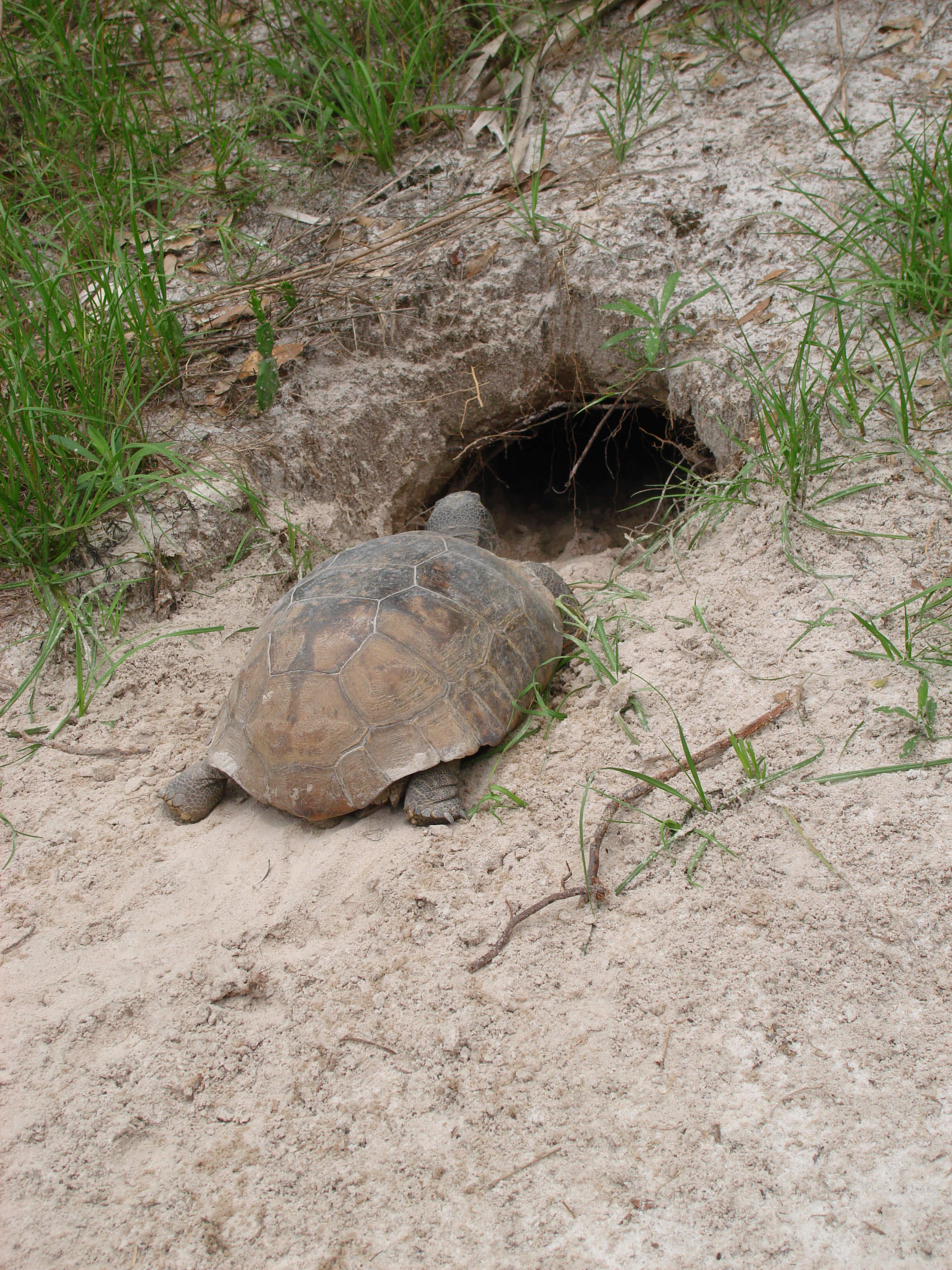
They're like apartment builders for themselves and hundreds of other species.
Habitat fragmentation pushes gopher tortoise populations closer to more hazardous areas near people. Roadsides can be lethal, as can hunters who destroy burrows looking for rattlesnakes. Illegal collection for the pet trade or as food further reduces populations.
Gopher tortoises face different threats in different areas. For example, in Georgia, dams flood gopher tortoise habitat while agricultural conversion is a main threat in Mississippi. Fire exclusion reduces suitable habitat in Alabama and Florida, and development fragments and degrades habitat in all regions. Gopher tortoise populations have experienced an 80% decline in the last 100 years, and more decline is expected with additional habitat loss.
Where can you see gopher tortoises?
Because gopher tortoises are living closer to people than ever before, they can be spotted in neighborhoods, along roadways, and in public parks and forests. You might need to look closely, though, because the tortoises spend most of their time in their extensive underground burrows.
Many TNC preserves are home to healthy gopher tortoise populations, which are active all year round. Try to spot one on your next visit during spring, summer or early fall!
Alabama:
Florida:
- Apalachicola Bluffs and Ravines Preserve
- Blowing Rocks Preserve
- Disney Wilderness Preserve
- Tiger Creek Preserve
Georgia:
- Broxton Rocks Preserve (by tour only)
- Charles Harrold Preserve
- Chattahoochee Fall Line
- Moody Forest Natural Area
Mississippi:
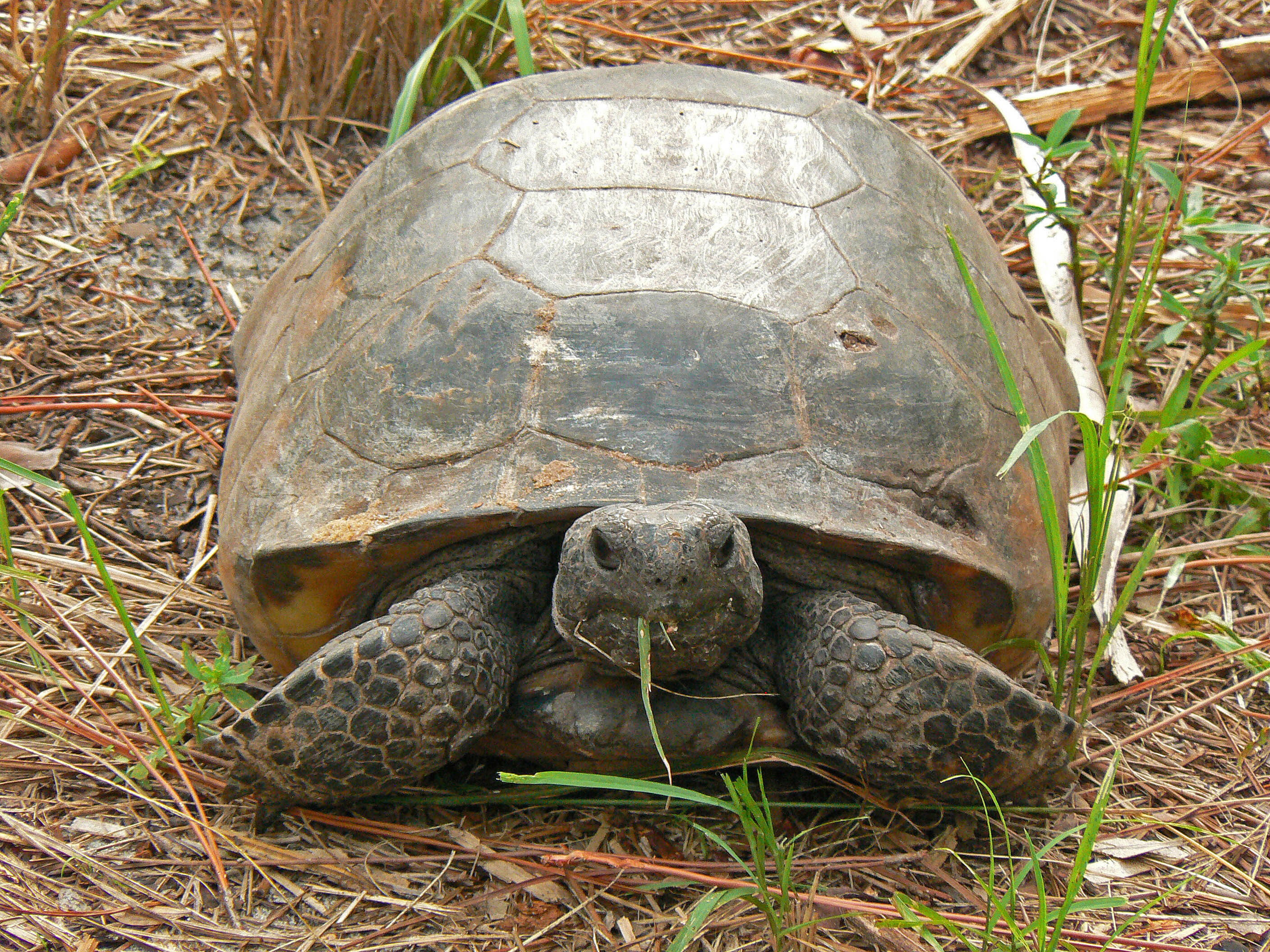
Georgia Gopher Tortoise Conservation
Scientists have identified priority areas for protecting and restoring gopher tortoise habitat in southern Georgia. TNC is working with the Georgia Department of Natural Resources and other conservation partners to protect a minimum of 65 viable gopher tortoise populations. To meet this goal, the Gopher Tortoise Conservation Initiative aims to protect 100,000+ acres of key habitat and raise funds to manage those lands. Part of this plan is to connect with landowners willing to sell their properties or create conservation easements.
If we can protect at least 100,000 acres of critical gopher tortoise habitat, the species will not need regulatory protection. We’ve already protected around 1.3 million acres of gopher tortoise habitat in Georgia. On those protected acres, the gopher tortoise population is near 40,000 individuals, or 61 viable populations.
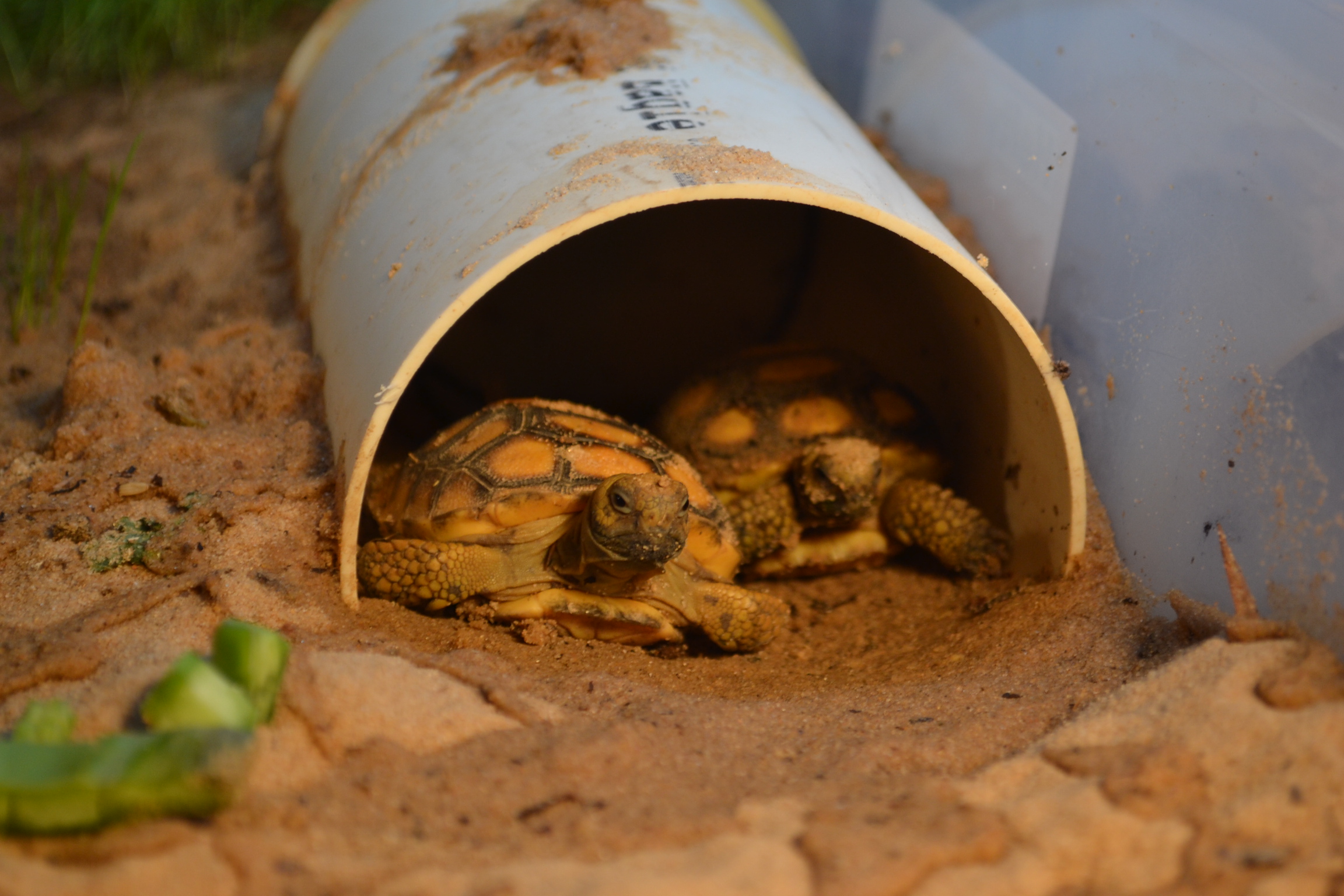
Mississippi Gopher Tortoise Conservation
In addition to actively restoring and protecting the longleaf pine communities that gopher tortoises need to survive, TNC in Mississippi is leading a program and the Camp Shelby Joint Forces Training Center where we incubate, raise and release hundreds of gopher tortoises each year. This is called headstarting: giving young tortoises a head start by releasing them when they’re big enough to avoid predators.
The tortoise nursery at Camp Shelby is home to the largest known population of gopher tortoises in the western portion of their range. This population has been the focus of much interest because few tortoises in the area live long enough to reach adulthood. Only 25% of all eggs hatch in the wild and only 10% of hatchlings survive their first year.
Hatchlings raised at Camp Shelby are released after 2 years, when they’re about the same size as 6–7-year-old tortoises living in the wild. Their larger size increases their chance of survival by up to 85%, giving them the best chance to reach sexual maturity and growing a healthy population.
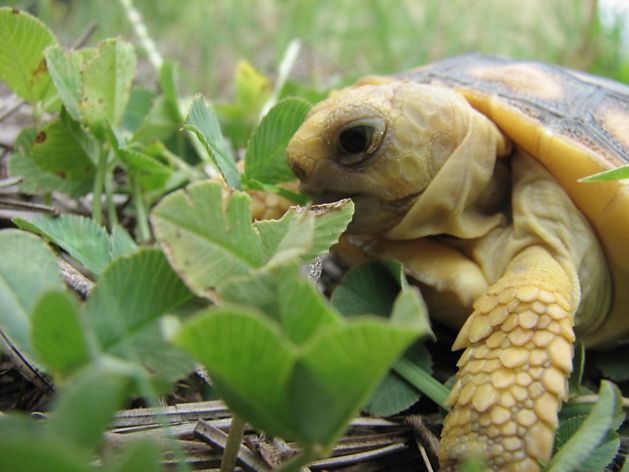
Bio-diversify Your Inbox
Get the latest on how we support biodiversity (and cute photos!).


